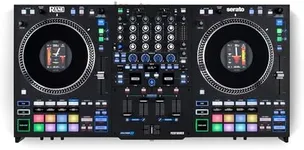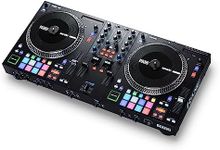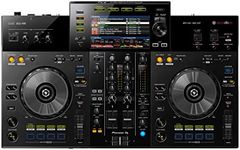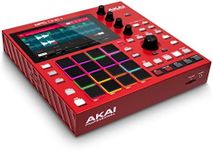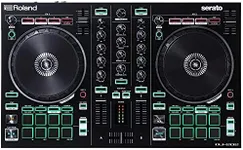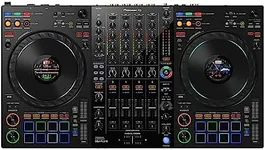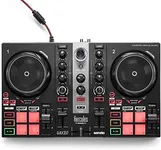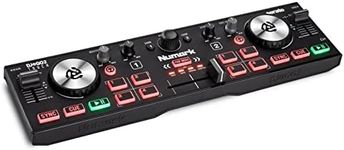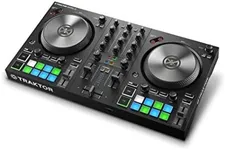Buying Guide for the Best DJ Controllers
Choosing the right DJ controller can make a big difference in your mixing experience, whether you're just starting out or looking to upgrade your setup. The best approach is to think about how and where you'll use the controller, what features matter most to you, and how comfortable you are with DJ software and hardware. By understanding the key specifications, you can find a controller that matches your style, skill level, and performance needs.Number of ChannelsThe number of channels on a DJ controller refers to how many audio sources you can mix at once. This is important because it determines how complex your mixes can be. Two-channel controllers are great for beginners or those who mainly mix two tracks at a time, while four-channel controllers are better for more advanced DJs who want to layer multiple tracks, samples, or effects. If you plan to keep your setup simple, two channels are usually enough, but if you want more creative freedom, consider a controller with four or more channels.
Jog Wheel Size and TypeJog wheels are the round platters you use to scratch, cue, and nudge tracks. Their size and feel can affect your control and comfort. Larger jog wheels often feel more like traditional turntables and are preferred by DJs who scratch or want precise control, while smaller jog wheels make the controller more compact and portable. Some jog wheels are touch-sensitive, which can make certain techniques easier. Think about whether you value portability or a more authentic vinyl feel, and choose accordingly.
Pad Performance FeaturesPerformance pads are the buttons used for triggering samples, hot cues, loops, and effects. The number and quality of these pads can expand your creative options. More pads and advanced features like velocity sensitivity allow for more expressive performances. If you enjoy remixing tracks live or want to add lots of effects, look for controllers with more and better-quality pads. If you prefer straightforward mixing, basic pads may be sufficient.
Software CompatibilityDJ controllers are designed to work with specific DJ software, such as Serato, Rekordbox, Traktor, or Virtual DJ. This is important because the software determines your workflow, available features, and even music library management. Some controllers are tightly integrated with one software, while others are more flexible. If you already use or prefer a certain DJ software, make sure the controller is compatible. If you're open to learning new software, you have more options.
Input and Output OptionsInputs and outputs refer to the types of connections available on the controller, such as microphone inputs, headphone outputs, and connections for speakers or external devices. This matters for how you set up your gear and perform. More outputs give you flexibility for connecting to different sound systems, while extra inputs let you add microphones or external audio sources. Consider where you'll be playing—at home, in clubs, or at events—and choose a controller with the right connections for your needs.
Build Quality and PortabilityBuild quality affects how durable and reliable your controller will be, especially if you plan to transport it often. Heavier, metal-bodied controllers are more robust but less portable, while lighter, plastic models are easier to carry but may not withstand heavy use. If you travel or play gigs, portability might be a priority, but if your controller will stay in one place, sturdier build quality could be more important.
Mixer and Effects ControlsThe mixer section and effects controls let you blend tracks and add creative touches to your mixes. Some controllers offer simple EQ and filter controls, while others have more advanced effects and dedicated knobs or faders. If you like to experiment with sound and effects, look for a controller with more hands-on controls. If you prefer a straightforward approach, basic mixer controls may be all you need.
